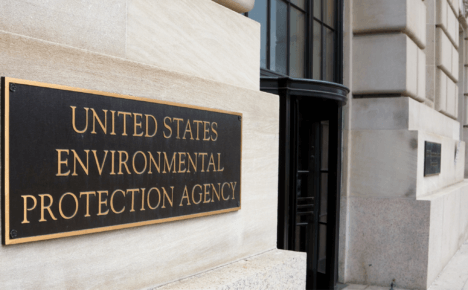
The U.S. Environmental Protection Agency (EPA) is under intense pressure to regulate ethylene oxide (EO) and reduce emissions based on its prior characterization of the substance as a likely cause of cancer. However, the inputs into that description have been challenged as flawed and just plain wrong. In spite of this, the EPA continues to press forward, ignoring strong scientific data and arguments in the name of environmental justice.
EO is often used as a chemical intermediate in the process of making ethylene glycol. When EO is hydrated at extremely hot temperatures, it will make ethylene glycol. EO is used in the following:
- Antifreeze
- Detergents
- Solvents
- Medicine
- Adhesives
EO is also used to sterilize surgical equipment and as a fumigant for spices. All of the EO manufactured in the United States is produced in Texas and Louisiana.
How the EPA Uses IRIS in its Regulation
EPA uses a program called the Integrated Risk Information System (IRIS) to measure health hazards posed by certain chemicals found in the environment. IRIS is supposed to provide a basis for the EPA’s regulatory measures with regard to certain specific chemicals. The end result is that IRIS factors in a substance’s toxicity, exposure assessments, and hazard information to describe public health risks associated with each chemical.
IRIS information is readily accessible to the public. Anyone can visit the EPA’s website and click on each individual chemical to see reference doses and concentrations and whether it is a carcinogen. The information is also available to states and public health agencies who can use it for their own regulatory efforts. States such as Georgia and Illinois are already moving ahead with legislation to restrict EO based on the IRIS value. For its part, the EPA claims IRIS information is impartial and is a way of objectively assessing the risk of each individual chemical.
On paper, it would seem like the EPA has a proven quantitative method to form the basis of its regulation and assessment of particular chemicals. In practice, IRIS is anything but proven and reliable. IRIS is both controversial and often scientifically flawed. Its assessments do not always get it right, but the EPA often forges ahead anyway.
The EPA’s attempts to regulate EO are a case in point. The federal agency has used and relied on its IRIS value even though there is strong disagreement about it within the scientific community. The EPA has attempted to make rules based on an arguably incorrect IRIS value.
The EPA Has Changed its Assessment of EO Based on Controversial Data
Specifically, the agency has used the IRIS value in its Miscellaneous Organic Chemical Manufacturing Residual Risk and Technology Review (MON RTR). In 2016, based on the IRIS value, the EPA changed its risk descriptor for ethylene oxide from “probably carcinogenic to humans” to “carcinogenic to humans.” The EPA is now poised to regulate based on this description and has begun to take steps that could place new restrictions on manufacturers and emissions. Already, the EPA has made information requests to numerous chemical manufacturers and is requiring greater monitoring of potential pollutants.
Under the Administrative Procedures Act, an agency is legally obligated to consider public input in certain regulatory actions. The agency must give the public notice of any regulatory actions and the opportunity to submit comments on them. In turn, the agency must consider those comments in reaching its final decision.
While the EPA notifies the public about what goes into determining IRIS values for certain chemicals, it is responsible for setting these levels. The EPA will rely on the IRIS values as the basis for rules. In those cases, the public is allowed to comment and have input. While the EPA must address these comments, its only constraint is that its actions should not be “arbitrary and capricious.” An agency relying on flawed inputs faces legal risks when it is sued over its rulemaking if it lacks a rational foundation.
The EPA Is Beset on All Sides but Moves Ahead
The EPA has faced pressure from all sides with regard to EO. The agency is feeling the political heat, as the Biden Administration has committed to reducing EO emissions. The EPA’s Inspector General is pushing the agency to move more quickly in response to the description of EO as a likely carcinogen.
All of this comes in spite of the EPA’s promise to review its use of EO’s IRIS value in its MON RTR. The agency has been under pressure for years to take this step in light of the sharp criticism of the IRIS value for EO. Specifically, when the agency raised the risk factor for EO in 2016, there were allegations it was ignoring plausible evidence that could support a lower number. Instead, the EPA selected a controversial statistical model that may have been inconsistent with other available data. The EPA has dragged its feet for years since being asked to reconsider its 2016 decision.
Recognizing the flaws in the EPA’s data, the Texas Commission on Environmental Quality (TECQ) performed its own analysis of the cancer risk of EO. TECQ released its own study for public comment, reaching very different conclusions about the risks of EO rooted in science and data. Texas is relying on these conclusions to support its issuance of air pollution permits.
In the meantime, the EPA is pushing ahead. One thing that an agency does not like to do is buck its own Inspector General, especially when the that individual is taking a position that is consistent with the prevailing political winds. One can expect a flurry of environmental litigation related to EO filed by entities on both sides of the issue.
